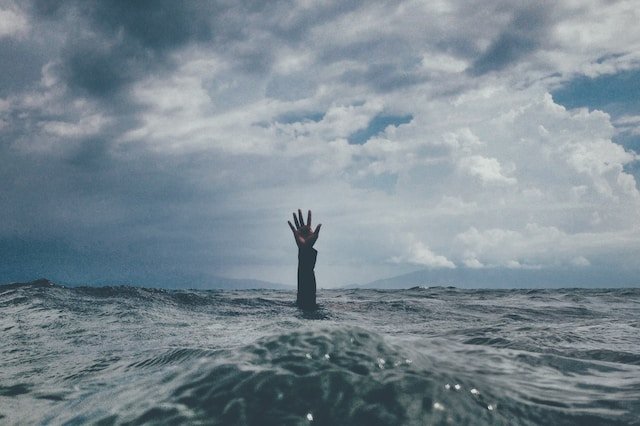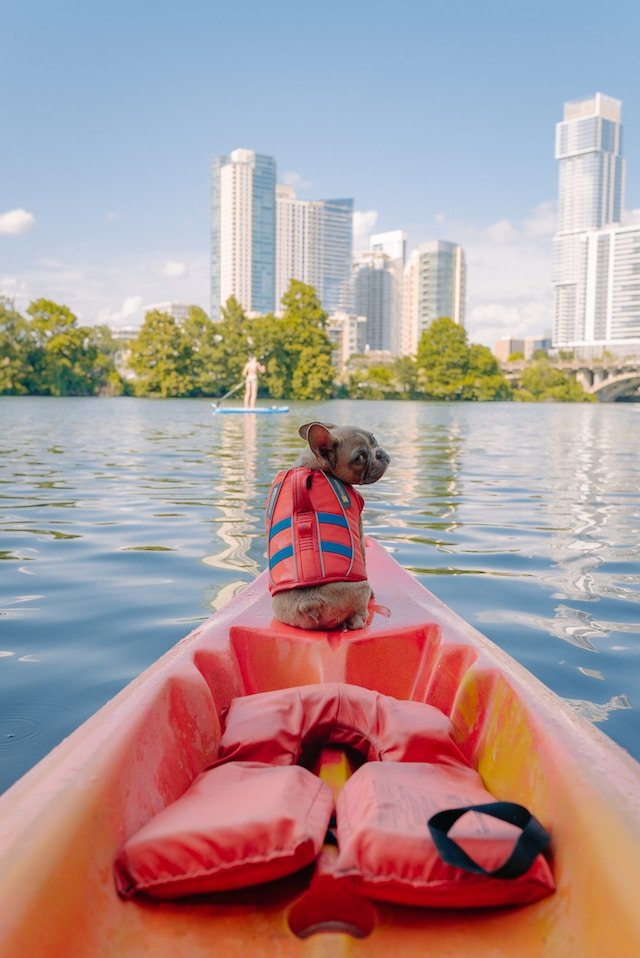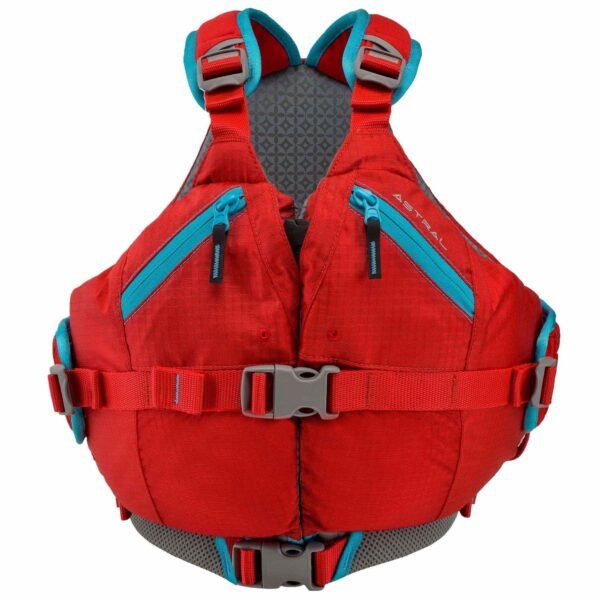Can You Drown with a Life Jacket?

Imagine a serene morning on a crystal-clear lake, the sun gently warming your skin, and the joy of adventure as you go on a water sports adventure.
As exciting as water sports might be, not everyone plays it safe while on the water. A lot of people are scared about water sports because they’re not expert swimmers, but that’s where a life jacket can come in handy.
In this article, we’ll be diving into life jackets, types and functions, limitations of life jackets, and the importance of safety while water sports.
Types of Life Jackets
There are a couple of various types of Life jackets on the market, depending on the specific water activity that has tickled your interest. It is important to understand the available types to be able to effectively choose one based on your activity of choice.
1. Inherent Buoyancy Life Jackets:
These are designed with buoyant materials that float on water. They are typically made of foam or other buoyant substances and do not require any action, such as inflation, to provide buoyancy.
These life jackets are the go-to choice for activities like kayaking, canoeing, and sailing, where constant flotation is necessary.
2. Inflatable Life Jackets:
These rely on being inflated to provide buoyancy. They are compact and comfortable to wear, making them popular for activities like fishing and boating.
They can be either manually inflated by pulling a cord or automatically inflated when they come in contact with water.
How Life Jackets Work
To understand the efficiency of life jackets in preventing drowning, it’s essential to grasp how they work.
1. Buoyancy Principles: Life jackets work based on the principle of buoyancy, which states that any object immersed in water experiences an upward force equal to the weight of the water displaced.
The buoyant material within the life jacket displaces water, creating an upward force that keeps the wearer afloat.
2. Flotation Materials: The flotation material used in life jackets is typically plastic foam, which is known for its excellent buoyancy properties.
This foam is strategically put in place to provide buoyancy in the right areas, ensuring the wearer stays in a safe and stable position in the water.
Proper Sizing & Fitting For Life Jackets
While the type and design of a life jacket play a significant role in water safety, getting the correct fit is equally important.
Life jackets come in various sizes to allow for different body types and weights. Ensure to pick a size that matches your weight and chest size, based on the manufacturer’s instructions.
It’s also important that the straps and closures are properly fitted. The last thing you want on your hands is a loose life jacket, that may not provide adequate support while you’re out on the water.
A well-fitted life jacket should not ride up or slip over your head. The right size will cover your chest and extend down to your ribcage. You also want to ensure the arm openings do not restrict arm movement.
The Role of Life Jackets
Before we explore the possibility of drowning with a life jacket, let’s understand the fundamental purpose of this essential safety wear.
Life jackets, also known as personal flotation devices (PFDs), are designed to keep individuals afloat in the water, particularly in situations where swimming or staying afloat may be challenging.
They come in various types, with each type offering different buoyancy levels to suit different water activities.
Functions of a Life Jacket
1. Buoyancy: Life jackets provide buoyancy by displacing water, helping individuals stay afloat without exerting significant effort. This is especially crucial in emergencies or when exhaustion sets in.
2. Assisting Weak Swimmers: Life jackets are a lifesaver for weak swimmers, children, or those who are not good at swimming. They offer peace of mind and confidence while on the water.
3. Impact Protection: In addition to buoyancy, life jackets can provide impact protection, reducing the risk of injury in situations such as accidental falls or collisions.
The Myth of Drowning with a Life Jacket
Debunking Common Misconceptions
Many misconceptions surround the idea of drowning with a life jacket. Here, we are going to help you clarify what is true and untrue about life jackets.
It is a popular belief that wearing a life jacket makes it impossible for the wearer to sink. While life jackets provide buoyancy and increase safety while on the water, it is not foolproof. Various factors such as size, fit, and type and quality of the life jacket worn can reduce the effectiveness of life jackets.
Another factor that affects the effectiveness of life jackets is user error. Like any other equipment, ignoring the manufacturer’s instructions can result in accidents.
The Limitations of Life Jackets
While life jackets are invaluable safety tools, they have limitations that must be acknowledged to understand the potential risks and ensure safety while on water.
1. Potential for Secondary Drowning
Secondary drowning, also known as dry drowning, occurs when water is inhaled into the lungs but doesn’t cause immediate symptoms. It can lead to respiratory distress hours after leaving the water.
While a life jacket helps keep the head above water, it cannot prevent water from entering the airway, potentially leading to secondary drowning in rare cases.
2. Hypothermia Risks
Prolonged exposure to cold water can cause hypothermia, even if you’re wearing a life jacket. While a life jacket will help you stay afloat, it won’t prevent the body from losing heat.
Hypothermia can impair judgment, coordination, and ultimately, self-rescue abilities, increasing the risk of drowning.
3. Impact on Self-Rescue Abilities
Some people rely solely on a life jacket without understanding water safety and self-rescue techniques.in case of turbulence or strong currents, a life jacket may not be enough to help an individual to safety.
It is advised that before engaging in water sports, some level of water safety education and training should be acquired. A life jacket becomes more effective in the hands of a skilled individual.
Factors Affecting the Risk of Drowning with a Life Jacket
As effective as a life jacket can be, it has its limitations. Understanding the factors that influence drowning risk while wearing a life jacket is crucial for making informed decisions about water safety.
Water Conditions
1. Calm vs. Turbulent Waters
Water condition plays a significant role in determining the effectiveness of any life jacket. In calm, still waters, a well-fitted life jacket is generally sufficient to keep you afloat without much effort.
However, in turbulent waters with strong currents, rapids, or waves, the risk of submersion is higher than in calm waters, even when wearing a life jacket. The force of rushing water can push you underwater or make it challenging to maintain a stable position.
2. Cold Water vs. Warm Water
Water temperature is a critical factor in water safety. Cold water can lead to hypothermia, even with a life jacket on. While a life jacket keeps you buoyant, it doesn’t provide insulation.
In cold water, the onset of hypothermia can impair your ability to swim and make rational decisions, increasing the risk of drowning.
User Factors
1. Swimming Proficiency
Your ability to swim is a significant determinant of your safety in the water, even when wearing a life jacket. Proficient swimmers can navigate challenging conditions and may be better equipped to self-rescue if necessary.
The buoyancy of a life jacket provides some level of safety for people who can’t swim and those with limited swimming ability.
2. Physical Condition
Your physical condition also plays a role. Fatigue, illness, or injury can diminish your ability to stay afloat and swim effectively, even with a life jacket. It’s essential to assess your physical condition and overall health before entering the water, as it can impact your safety.
Life Jacket Quality and Condition
1. Ensuring Life Jacket Integrity
The quality and condition of your life jacket are critical. Regularly inspect it for signs of wear and tear, including frayed straps, damaged flotation material, or punctures. A damaged life jacket may not provide the necessary buoyancy, increasing the risk of submersion.
2. Choosing the Right Type for the Activity
Selecting the appropriate type of life jacket for your activity is essential. Inherent buoyancy life jackets are better suited for activities like kayaking, where constant flotation is needed, while inflatable life jackets may be suitable for more leisurely pursuits.
Using the right type ensures that you have the necessary buoyancy for your specific water activity.
Best Practices for Using a Life Jacket
Beyond wearing a life jacket it is important to get the best out of it. Certain practices will enable you to use a life jacket effectively and overall improve your safety will on the water.
The first practice is choosing the right life jacket. A life jacket is not a one-size-fits-all.
Tips for Choosing the Right Life Jacket
1. Select the Appropriate Type
Choose a life jacket that matches your intended water activity. Inherent buoyancy life jackets are ideal for activities like kayaking, while inflatable life jackets are suitable for calmer waters.
2. Check for Certification
Ensure the life jacket is certified by a recognized authority, such as the U.S. Coast Guard. Certification indicates that the life jacket meets safety standards.
3. Consider Buoyancy Level
Pay attention to the buoyancy rating of the life jacket. Buoyancy levels vary, so select one that provides enough buoyancy for your body weight and activity.
4. Ensure it is properly fitted
Aside from picking the right type of life jacket for your intended activity, it is important to pick one that fits you well.
Choose the right size based on your weight and chest measurements. Follow the manufacturer’s guidelines for sizing.
Adjust the straps, buckles, and closures to achieve a snug fit without discomfort. Also, it is important to check for proper arm movement. If the armhole is too small, arm movement might be limited or difficult which decreases safety while on the water. A well-fitted life jacket is crucial for effective buoyancy.
5. Wear It Correctly
Put on the life jacket before entering the water. Wearing the life jacket while in the water can be challenging and may lead to user errors. Ensure the life jacket covers your chest and ribcage and doesn’t ride up when you lift your arms.
6. Regular Inspection
People who engage regularly in water activities might have their life jackets. Before each use, inspect your life jacket for signs of wear and tear like frayed straps, damaged flotation material, or punctures.
Ensure all buckles, zippers, and closures are in good working condition. Wearing a damaged life jacket puts you at risk while on water.
7. Proper Storage
Store your life jacket in a cool, dry place away from direct sunlight. Avoid prolonged exposure to extreme temperatures, which can degrade materials with time. To maintain the shape and avoid creases, your life jacket should be hung on a wide hanger.
Additional Safety Measures For Water Activities
1. Buddy System
When possible, use the buddy system. Having a swimming or boating partner can provide critical support in case of emergencies. In challenging conditions, such as strong currents, having a partner can assist with rescues or assist while waiting for help.
2. Knowledge of Local Water Conditions
Before heading out, familiarise yourself with local water conditions like the area’s tides, currents, and potential hazards.
Being aware of the environment allows you to make informed decisions and avoid situations where a life jacket alone may not be enough to guarantee your safety.
In this article, we have seen that the use of a life jacket does not in itself eliminate the risk of drowning. However, it is essential when out on water.
To get the best out of a life jacket, it is important to select the right type and size. Before engaging in water activities familiarise yourself with the potential risks and how to ensure your safety in challenging conditions.





